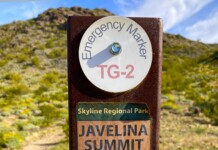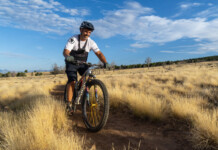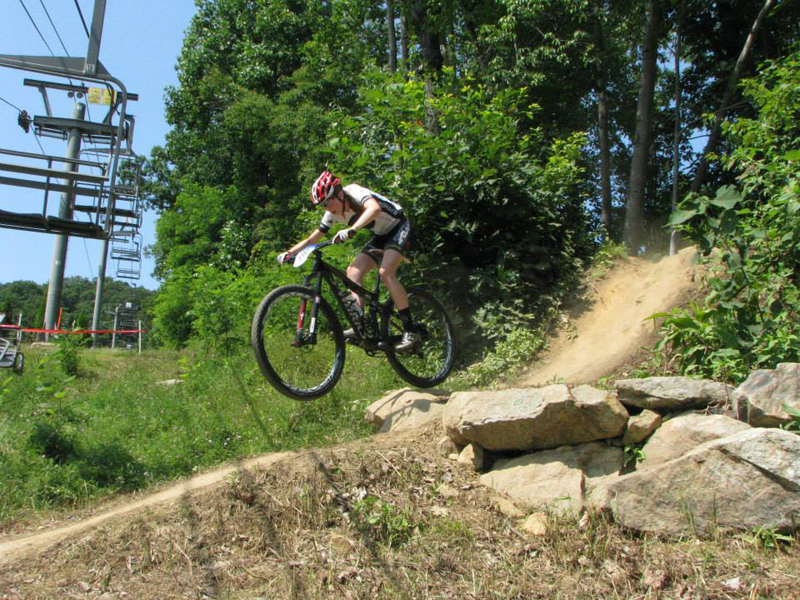By Jamie Morningstar — I’m a roadie. Well, actually I’m a cycle commuter and an occasional road biker. Six years ago, I tried out mountain biking with some friends, followed them on a too-hard trail, wrecked, and ended up in a fetching orthopedic boot-and-crutches combo for a few months. At that point, I decided that perhaps mountain biking was not my sport and stuck with the road.
But last year my daughter wanted to sign up for her high school mountain bike team and, never one to give up the opportunity to spend time with my kid or buy a new bike, I decided to try MTB out again. Without really knowing what I was signing up for, I certified as a NICA Level 1 coach so I could ride along with the team and committed to being an assistant ride leader. And suddenly I was riding with the team three days a week!
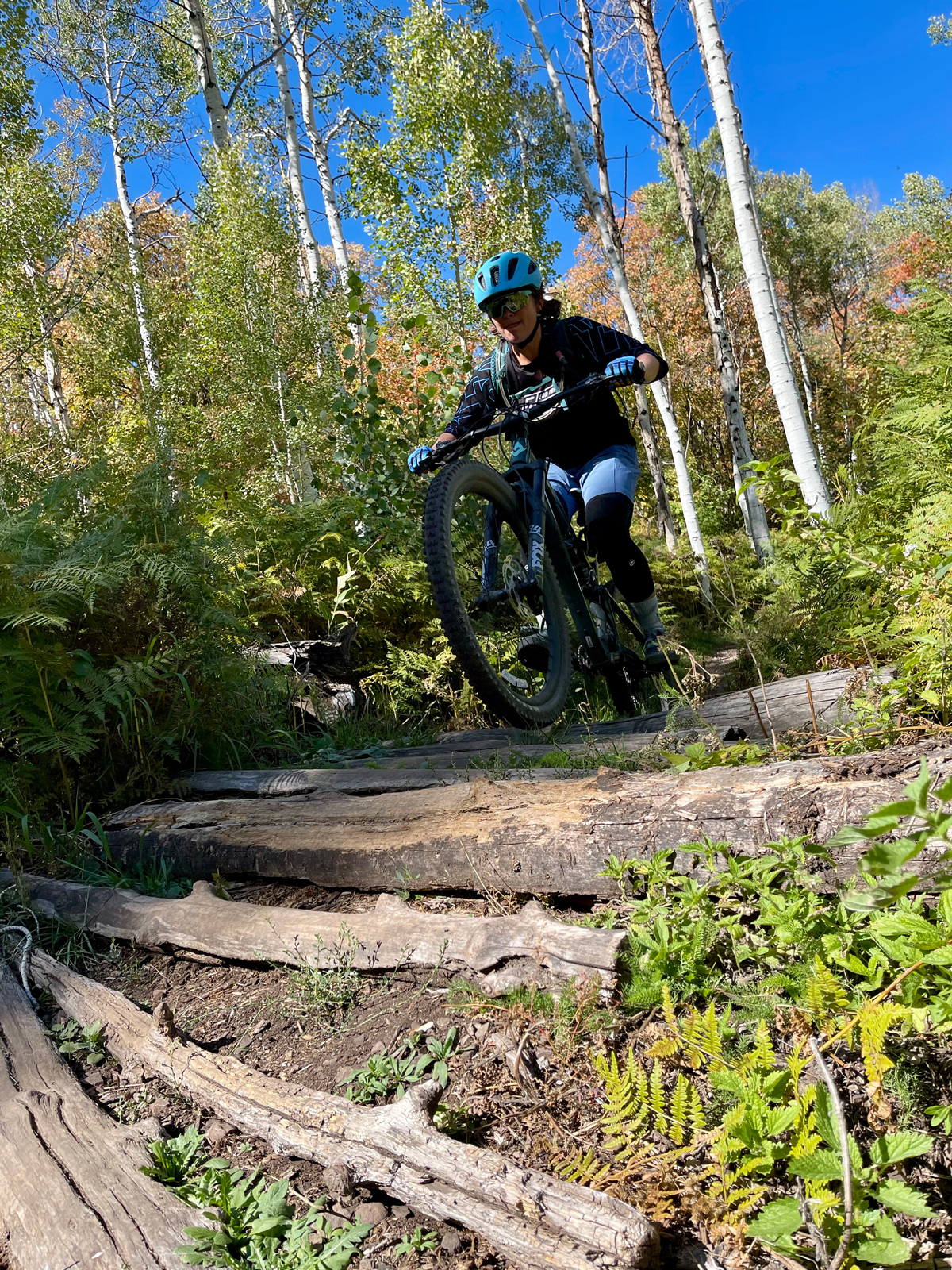
And I had an amazing first MTB season. I am so impressed with NICA (National Interscholastic Cycling Association, the high school mountain biking organization) and their emphasis on kids having fun, growing, finding community, and challenging themselves. The fellow coaches were super supportive of this enthusiastic-and-skill-free mom, the kids were a blast to ride with, I got to hang out with my daughter even more, and I even got a new bike out of the deal. Win. I had an amazing first MTB season and both my daughter and I are definitely coming back for more this summer.
That said, I did, and do, have a lot to learn. I spent the majority of my summer with spectacularly bruised legs and brake-gripping fear of basically every turn and descent. So, if you’re new to mountain biking or just considering trying it out, here are a few lessons and pointers I took away from my first year as a mountain biker.
You just have to let go a little. Mountain biking is definitely an exercise in finding the boundary between letting go and being reckless. Your wheels need to be rolling in order to grip, which means if you’re grabbing brake your tires actually aren’t performing their best. So, if I’m panicking and braking, I’m actually causing my tires to be able to corner less effectively, causing me to panic and brake even more. You can see the vicious cycle emerging.
This letting go is challenging for me. I like being in control. And if I feel like things are out of control (which they basically always are when mountain biking downhill), I try to double down on the control. Yes, the life metaphors here abound.
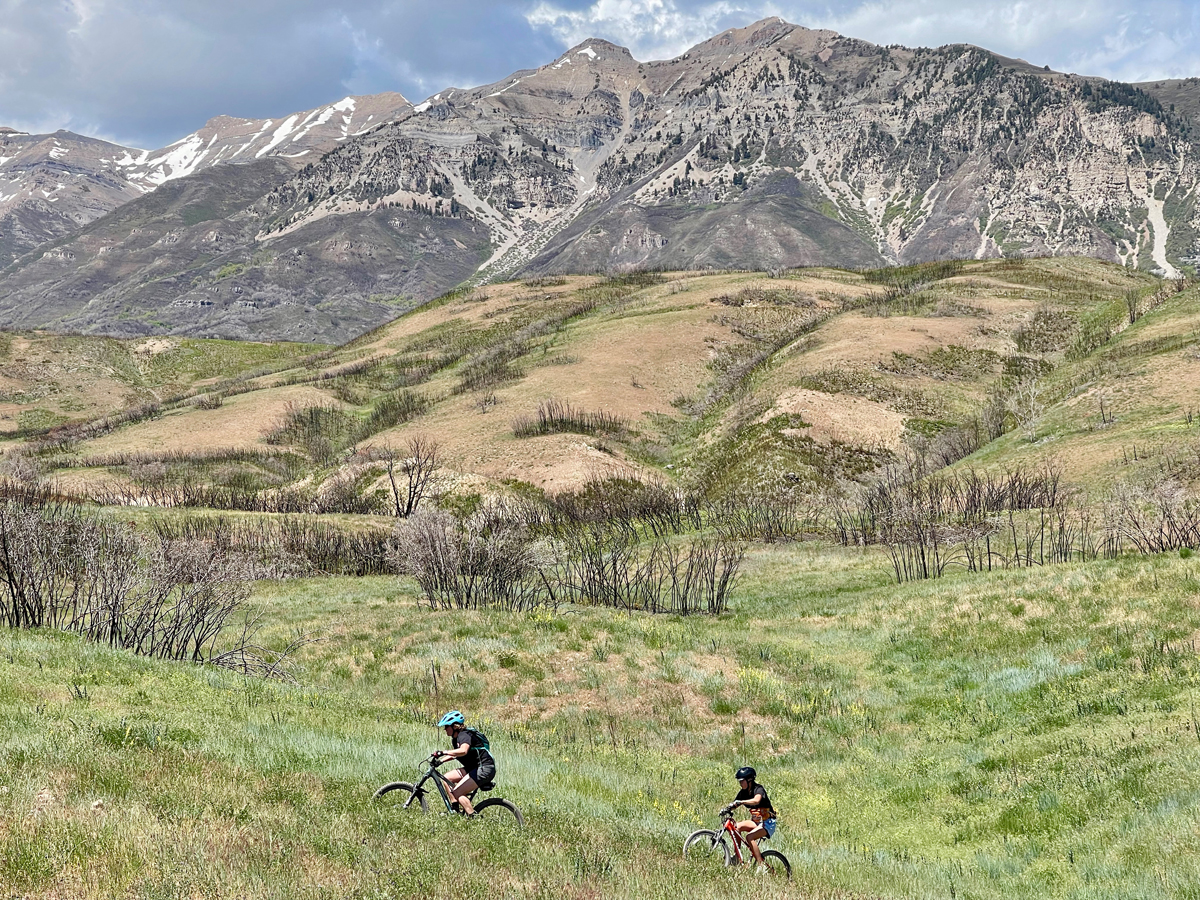
This phenomenon is also true in road biking – all tires corner better while rolling – but it’s way more exaggerated in MTB. For me, the hardest part of beginning mountain biking has been trusting myself and my bike and letting go a little. It’s been a wonderful lesson in trusting my body and bike, finding my edge, pushing it, and having a blast.
Mountain biking is really strenuous. Mile for mile, mountain biking is way harder than road biking. As somebody who has done many (casual) century rides and commutes to work by bike every day, I thought I was in acceptable cycling shape. I was wrong. Mountain biking is a whole different kind of hard from road riding, or at least the kind of road riding I do.
I don’t know that there’s much to do about this one – you either build up the strength over time or buy an e-mountain bike (and those e-bikes are awesome! That’s a pretty sweet option!). I think the key to this lesson is a little self-love. If you find yourself climbing up one of our beautiful Utah trails coughing gunk out of unused corners of your lungs and wondering just how hard you can push before your heart actually explodes, you’re in good company. You’re not doing anything wrong; you’re just adjusting. Give yourself a little grace, shrug, and smile. If you end up hike-a-biking up a hill or five, just enjoy that you’re challenging your body in a whole new way.
You’re allowed to wear your road kit on the trail. I was worried about proper uniform when I started mountain biking. Over the years I’ve amassed quite the collection of cycling kit – would I get laughed off the trail if I wore spandex? Did I need to buy super ugly MTB-style sunglasses? What gloves were right for mountain biking?
I have good news for you if you share these concerns – mountain biking is pretty forgiving attire-wise. Although many mountain bikers will wear baggies, it’s perfectly acceptable to wear the clothes and even the helmet you have from road biking. Over time, you may choose to get MTB-specific gear, but you don’t have to spring for a whole new cycling wardrobe in the beginning. For example, I eventually decided that I didn’t like the way my road cycling glasses felt while on the bumpy trail and I did get a pair of fabulously futuristic MTB shades that still make my children cringe every time I put them on. But I didn’t have to start that way, and I still wear a lot of my road kit, gloves, and accessories on the trail.
Do wear long pants and long sleeves in the beginning. Always wear gloves. Perhaps you’re more coordinated than I am. Perhaps you’ll fall less. But I fell a lot during my first season riding a mountain bike. It was usually nothing spectacular, but I did fall. I wish I had figured out earlier that it was just smarter to wear long pants and long sleeves on the trail. More skin coverage would have saved me a lot of mid-grade scuffs and scrapes. And always wear gloves and eye protection on the trail (or on the road, for that matter).
Flat pedals are completely acceptable. Another area of angst for me when beginning to mountain bike was the question of clipless pedals. Right or wrong (probably more of the latter), there’s an expectation in road cycling that once you get “serious,” you’ll switch over to clipless pedals. There’s a certain cachet to walking around like a duck after exiting your bike.
However, after my catastrophic mountain biking injury of five years’ earlier, I was extremely nervous about clipping in. You’ll imagine my delight that flat pedals are perfectly acceptable on mountain bikes. Yes, there’s still extra respect given to those wearing cleats, but the pressure just isn’t the same in MTB circles to swap over to shoes you can’t walk like a normal human in. In fact, mountain bike shoes are amazingly comfortable and present a delightful skater vibe to my mind. So, worry not, you can wear sneakers and use flat pedals while mountain biking
Enroll in a clinic to accelerate your confidence. Professional help is not that expensive and will help you learn good base skills and confidence that will serve you well for many seasons. Most resorts offer group lessons, and you can also sign up for independent group clinics in your area.
This is also a stark difference between road and mountain biking. Yes, sure, you can get coaching for road biking and racing, but there isn’t really a clinic or lesson culture around road biking. Not so with mountain biking! Group clinics, private lessons, and MTB camps abound. A quick online search for lessons in your area will yield a variety of options that are well worth the investment in building your confidence and skills.
Redoing a route is surprisingly fun. Another difference between road and mountain biking has been the fun of riding the same route repeatedly. Sure, on the road I have my favorite rides (usually the ones most convenient to my house), and I have never been one to disparage routine. But on mountain biking there’s a different kind of delight to re-riding a tricky section of trail over and over, learning the turns, gaining confidence, and learning how to navigate the route just right.
What you learn on a mountain bike will help you in your other cycling disciplines. I’ve been amazed by how much stronger and more skilled a cyclist I’ve become as a result of my foray into mountain biking. Skills that I thought I understood as a roadie, such as bike-body separation, cornering, and body position, are so much more exaggerated on MTB.
If you’re a roadie who’s flirting with the idea of trying out mountain biking; do it! The hills and the learning curve are steep, the views are fabulous from the trail, and you’ll be a stronger cyclist and happier human for your time on knobby tires.
Jamie Morningstar is an avid cycle commuter, a passable roadie, and a spectacularly uncoordinated mountain biker who lives, works, and rides in Utah Valley.

